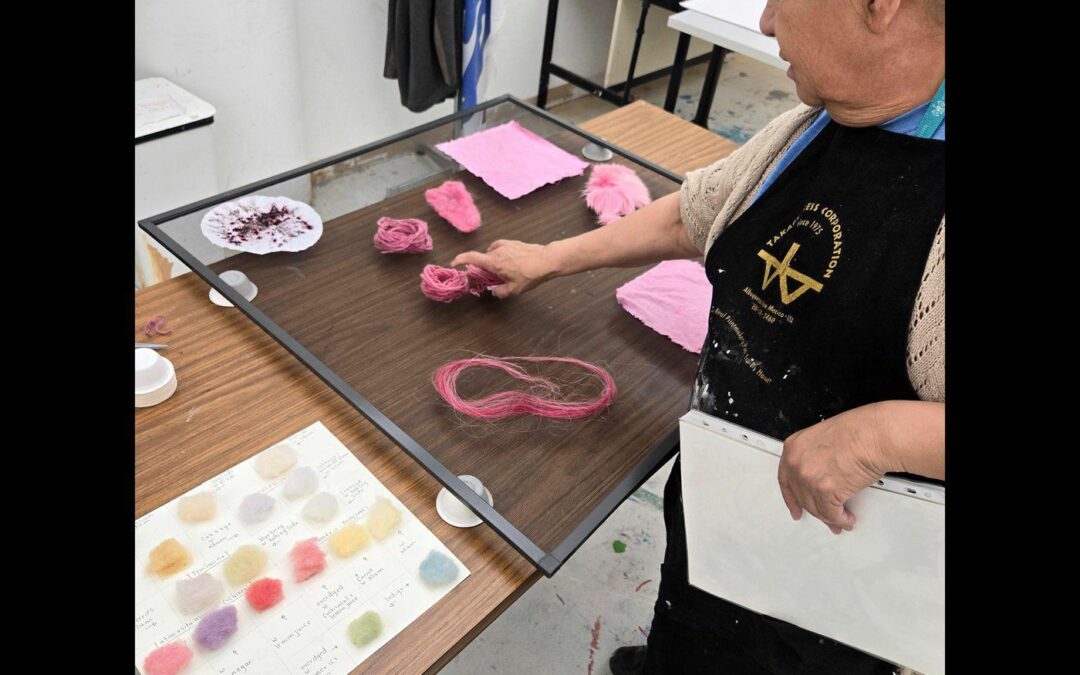By: NC Raine, Local Journalism Initiative Reporter, Eagle Feather News
Fine Art students at First Nations University of Canada (FNUniv) get an infusion of both science and traditional knowledge in an all-new course taking place on the Regina campus.
Developed by Audrey Dreaver, program coordinator and assistant professor of Indigenous Fine Arts at FNUniv, with Indigenous knowledge and science lab instructor Jody Bellegarde, the never-before-offered colour theory program examines various colour theories, relationships, and understands of colour, from both Indigenous and scientific perspectives.
“I want to show the importance of colour in both Western and Indigenous thought, and how it carries meaning when used in specific ways,” said Dreaver. “Artists should have a good understanding of colour.”
It is also a way for students to thinkg ourside the box.
“I’d like them to leave the classroom and never look at things the same way,” she said.
In the Indigenous approach to colour, Dreaver will have her students doing things like making ink out of lichen, or a bug that lives on a prickly pear cactus, known for its deep red colour.
She will also be examining how understanding of colour come from nature.
“In the Indigenous languages, when you talk about colour, the root word is connected to something in your environment. From that perspective, we’re looking at drawing colour from nature,” said Dreaver. “There’s a relationship that develops as soon as you start linking those colours to something you know.”
On the science side of things, Bellegarde is going to provide an introduction to chemistry and biology, as it relates to colour.
“The students are bringing their First Nations perspectives and traditional knowledge with them in these courses, so if you bring that knowledge to the Western science realm, you start looking at things differently,” said Bellegarde.
“I think this is a great opportunity to get students doing things outside their comfort zones, and let them think about things in different ways.”
The art students will be given the rare opportunity to look at colours, as artists, at the microscopic level. Bellegarde will have the students extracting plant pigments from different plants and applying different bases to them in order to change their PH levels, resulting in a wide range of colours.
“These two very different disciplines haven’t really been combined before at the university, so we want to give the art students the media and tools, and to get into spaces they normally wouldn’t get into,” said Bellegarde.
It is more than just a class it’s an entirely new experience for everyone, which can be exciting.
“We just don’t want to overwhelm them too quickly,” said Bellegarde. “The bottom line is building confidence.”
Dreaver said the connection between Western science and Indigenous knowledge is important in recognizing the equal value in both thoughts.
“I do my best to emphasize the advanced maths and sciences my ancestors knew, the level of intellectuality they had before settlers arrived,” she said.
Similarly, Bellegarde wants students leaving the class with the idea Indigenous knowledge ran parallel to Western science.
“We have the understanding of how all this chemistry works, these ways of knowing have long existed, we just didn’t put the fundamental Western terms on them,” said Bellegarde.
“Our First Nations knowledge existed for millennia is parallel to that Western knowledge,” he said.
